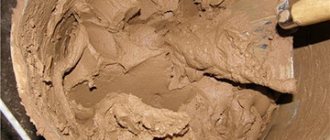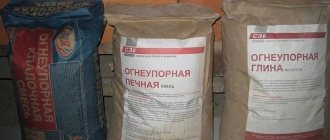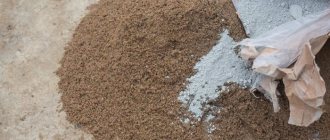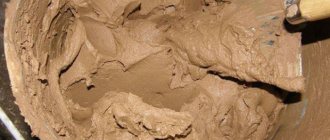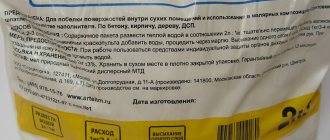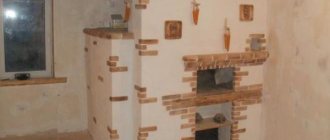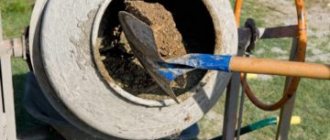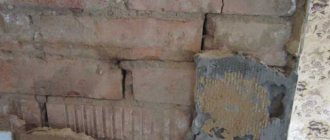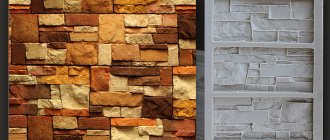Perhaps no cozy private home can be imagined without a good stove or fireplace. In addition, to this day, many people living in areas without gas supply are simply forced to heat with wood.
Brick mortar for oven proportions
On the one hand, this is the most environmentally friendly heating method, and on the other hand, it is economically profitable. Prices for alternative fuels and electricity maintain a steady upward trend, so it is necessary to look for the optimal way out of the current situation.
Many people want to learn how to install stoves, and this is not only due to the desire to save money on heating in winter. The practical skills acquired during the training process can be an excellent help in developing your personal business. The demand for furnace work is growing every year, creating prospects for fairly high earnings.
Advantageous properties of clay
Fireclay has some advantages over other materials due to the following characteristics:
- Long service life. Fireclay clay mortar does not crack, does not crumble, and retains its original shape for a long time.
- High adhesive properties, thanks to which the material adheres perfectly to any surface.
- Vapor permeability.
- Ability to withstand fairly high heat.
- Safety and environmental compliance.
Clay selection
When choosing refractory clay, you should pay attention to the packaging labeling. It has a special digital combination showing the fire resistance of the material. You should know that large values indicate high fire resistance of the clay. In addition, by the markings you can find out about the area of use of the material and for laying which bricks clay of this type is used.
The shelf life of chamotte clay is of great importance, since after a certain time kaolin loses its technical properties. Therefore, you should not purchase material after the end of the sales period.
Mineral composition
The raw material for the production of fireclay is clay, consisting of highly dispersed hydroaluminosilicates. In addition to them, the dry mass contains a certain amount of impurities. The extracted raw materials undergo a roasting procedure, after which they are enriched with minerals. There are many recipes that differ in the amount of water, fireclay powder and additives. The duration of heat treatment also varies. It depends on what characteristics the output product should have . The main difference is the colors and types of texture.
Chemical elements in refractory clay:
Specifications
When considering the technical characteristics of fireclay clay for oven plaster, it is necessary to note the following:
- The grain size corresponds to two millimeters.
- Highly fired fireclay absorbs no more than 10% moisture, and low fired fireclay absorbs no more than 25% moisture.
- The maximum temperature that the material can withstand is 18500C.
- The humidity of quality material does not exceed 5%.
When determining the required amount of material, you should know:
- A standard 20 kg package of clay is enough to lay 30 bricks.
- For 1 m3 of masonry, you should purchase 100 clay.
- A solution prepared with precise adherence to technology becomes absolutely solid after 24 hours, provided that the air temperature does not fall below +100C.
Clay in industrial packaging can be stored for 3 years from the date of manufacture.
Features of refractory clay
The preparation of mortar from fireclay clay for laying stoves is carried out by analogy with plaster mixtures, the application methods are also similar, which gives a big advantage to the material.
Fireclay mixture is suitable for sculptural work and decoration, for the construction of stoves and fireplaces. Products become durable due to the evaporation of moisture during the drying process of the clay composition. The result is a high-strength material that is resistant to high temperatures.
The following features of fireclay include:
- It does not crumble under high temperature.
- The material is resistant to the external environment.
- The original form remains unchanged for a long time.
To work with clay, you do not need to purchase special tools; the work process is carried out using a long and short spatula. Use one tool to lay the solution, and use another spatula to remove smudges.
What it is
Fireclay is a fire-resistant substance obtained from kaolin. The clay is heated to 1.3-1.5 thousand degrees, as a result of which the mass loses moisture and plasticity. During the process, the material sinteres and changes color from gray to brown. The burned pieces are crushed with special metal shafts to the state of fine sand of different fractions.
As a result of temperature changes, clay characteristics are radically transformed. The result is a very strong raw material, with parameters resembling stone. Due to the loss of liquid, the material does not expand when heated, maintaining its strength. After drying, the finished mixture does not shrink or crack.
Fireproof material Source remokna.in.ua
Fireproof fireclay is a semi-finished product for preparing mortar. By adding certain additives it is easy to adjust the parameters and adjust the mass to the needs of a person. You can find out the material in the store by the letter “Ш” on the packaging. The abbreviation “MSh” or “MP” is present in the names of the ready-to-use composition (mortar). The letter “U” is on a pack of a less strong recycled substance (after secondary processing).
Kaolin clay is classified as a material of natural origin. Raw materials are mined from the bottom of seas, lakes or rivers. The appearance and constituent substances often depend on the location of the deposits. The most common is light gray raw material, there are shades of pink, yellow and blue.
Where are raw materials mined Source teplo.guru
Clay preparation steps
It is very important for home craftsmen to know how to prepare fireclay clay for laying stoves. To do this, you can use the following scheme:
- Take a package of powder and pour it into a previously prepared container.
- Pour the powder with water and leave to swell for three days.
- After this time, water is added again and the clay is mixed at the same time. The process is continued until a homogeneous mass is obtained.
- In some cases, sand may be added.
When working with clay, it is necessary to constantly stir the solution; the quality of the work depends on this. In addition, it is important to pay attention to the consistency of the solution; it is recommended to add water to a too thick composition, and powder to a liquid one. It is especially important to fulfill this condition when laying a furnace using refractory clay.
The amount of water in the solution plays an important role: the dry composition crumbles and crumbles, the liquid composition flows down the working surface. Therefore, it is very important to know how to dilute fireclay clay for laying stoves. When calculating the water used, it should be taken into account that a solution of normal consistency resembles thick sour cream.
If clay is used in the process for instant work, then you need to pay attention to its features. When preparing the solution, you do not need to leave the powder to swell for three days, so the whole process will take much less time.
Mortar
The clay mixture is not suitable for the construction of a chimney and stove foundation. Condensation collects in the part of the chimney that is located above the roof. Because of it, the clay can crack. When building a foundation, clay mortar is not strong enough. It is best to use lime paste as a base for such purposes.
This dough is made by mixing water and quicklime in a 3:1 ratio. It is not recommended to make it yourself, as this can lead to injury to the skin and respiratory tract. It is better to purchase ready-made lime dough at any hardware store.
To prepare the solution, you need to sift the sand and rub the dough through a sieve. Then you need to mix one part of the dough with three parts of sand. Add water to obtain the required consistency.
To increase the strength of brickwork, you can use lime-cement mortar. To prepare it, we take one part of cement, two parts of lime paste, and ten parts of sand. First, mix sand and cement. Dilute the dough with water until it becomes viscous. Then add a mixture of sand and cement to the milk of lime and mix. If necessary, add water again in small portions.
Laying stoves and fireplaces
Stoves and fireplaces are structures that are constantly exposed to intense heat, so it is very important to choose the appropriate material. Firebricks made from fireclay clay are ideal for this purpose. When buying bricks of this type, you should pay attention to the marking, which should contain the letter “W”. However, fireclay brick is expensive, so it is purchased for laying out the firebox, and ordinary brick is used for the construction of the main structure.
It is very important to remember that fire bricks are only laid on a fire clay mortar. In this case, the expansion coefficient of the mortar and brick should be the same.
Alternative methods
A more radical way to get rid of cracks is to install an aluminum frame or another metal. To do this, you need two metal sheets, scissors for cutting metal, and corners. The size of the sheet is measured based on the height and length of the surface to be repaired, cut out and applied to the oven. The sheet is secured at the top and sides with metal corners. After installation, the frame can be painted.
In addition, you can line the stove surface with ceramic tiles. It can also be attached to the top of the frame, but if the cladding is done poorly, cracks will still appear on the stove, only under the tiles.
Plastering process
A solution of refractory clay is used in cases where it is necessary to obtain a perfectly flat surface. In the process of work, corners and a special profile are necessarily used. Several profiles installed on one wall help to achieve absolutely even plaster. During the installation process, it is recommended to use a plumb line or building level. Corners are used to obtain smooth edges; they are glued directly to the plane.
To obtain a perfectly flat surface, you should use the rule. It is fixed across the vertical profiles so as to achieve simultaneous contact of all beacons horizontally.
When installing beacons, you should also pay attention to the level of extension of the furnace door and the blower. The level of the profiles and doors must match so that the surface is smooth, without protrusions and depressions.
To make working with refractory clay mortar easier, you can use a special leveling tool. In this case, you can easily get a flat plane, but with small cracks. This problem can be solved using an ordinary wide spatula, which can be used to smooth the entire surface.
Instructions for applying clay plaster
The work is performed in the following sequence:
- mortar cakes are applied along the wall at regular intervals, and the material is stretched over the entire surface with a wide spatula, a rule or a trowel;
- Evenness is checked using a level. If necessary, apply a second layer;
- the surface is given time to dry completely: from 1 to 3 months, depending on the season;
- finishing is being carried out. To do this, use a solution consisting of clay, cement and sand in a ratio of 1 to 1 to 3. The mixture is applied in a thin layer and leveled. After three to four weeks, the stove can be whitewashed with lime.
Additional uses of fireclay clay
Very often, refractory clay is used to make decorative elements. These can be tiles, figurines and even household dishes. The plasticity of such clay is given by special components added to the composition.
Fireclay clay can be used to prepare high-quality mortar for laying stoves and plastering various surfaces. When deciding how to plaster a stove with fireclay clay, strict adherence to all technologies allows you to independently complete the entire process from preparing the solution to applying it to the surface.
How long does it take to dry heating structures?
Masonry with clay hardens for a very long time, the brick absorbs moisture and practically does not release it. Therefore, drying the stove takes place in 2 stages.
Natural drying takes at least five to seven days. At this time, the damper, door and vent in the oven should be open.
It is recommended to point the fan at the mouth of the firebox. During 5-6 days of natural drying, the solution hardens only on the surface of the stove, firebox, and chimney.
Forced drying is carried out for 9-10 days in summer and 3.5-4 weeks in winter.
The duration of drying depends on the design of the oven, its size and time of year. Several thin logs are burned in the stove daily (twice a day).
Drying is considered complete if, 3-4 hours after heating, there is no condensation on the inner surface of the door and on the valve.


